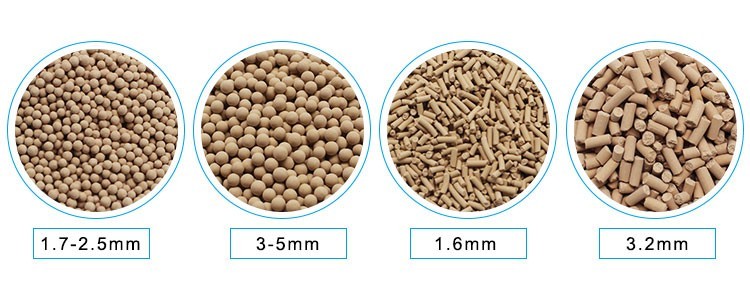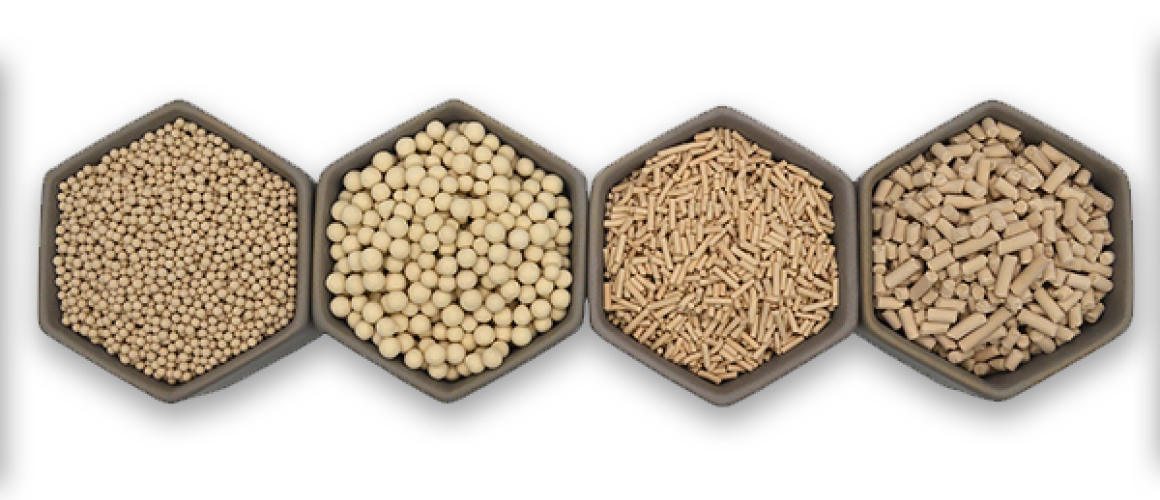Molecular Sieve and Product Preservation


Table of Content
Introduction
Proper storage of products is crucial in various industries, especially for moisture-sensitive items. Molecular sieves offer an effective solution for controlling moisture and ensuring product quality. In this article, we will explore the benefits and applications in product storage and provide tips on selecting the right type for your needs.
What is a Molecular Sieve?
A molecular sieve is a crystalline, porous material made from synthetic zeolites or other materials such as activated carbon. It has a regular and uniform pore structure, allowing it to selectively adsorb molecules based on their size and shape. The most common types are 3A, 4A, 5A, and 13X, each with different pore sizes and applications.
Benefits of Using Molecular Sieves for Product Storage
Molecular sieves offer several advantages when used for product storage:
Moisture Absorption and Control
They are excellent moisture adsorbents, with the ability to adsorb water vapor from the surrounding environment. This helps maintain optimal humidity levels inside storage containers, preventing damage caused by moisture.
Protection Against Mold and Mildew Growth
By controlling moisture, they inhibit mold and mildew growth that can deteriorate product quality and lead to health hazards.
Maintaining Product Quality and Shelf Life
Proper moisture control using molecular sieves helps preserve the quality of products and extends their shelf life, ultimately reducing waste and improving customer satisfaction.


Beyond Product Preservation: Key Molecular Sieve Processes
While molecular sieves play a critical role in product preservation by managing moisture levels, their applications extend far beyond packaging. Molecular sieves are integral to a variety of industrial processes, such as gas separation, adsorption, and catalytic support, each designed to improve efficiency, purity, and product quality across sectors.
For a broader look at how molecular sieves enhance industrial operations, check out our guide on Key Molecular Sieve Processes, where we cover these essential applications in detail.
Common Industries and Applications
Molecular sieves are utilized in various industries for product storage:
Pharmaceutical Industry
- Storage of moisture-sensitive drugs and supplements: maintain the potency and efficacy of pharmaceuticals by preventing moisture-induced degradation.
- Packaging solutions for extended shelf life: Incorporating molecular sieves into packaging materials can help prolong the shelf life of pharmaceutical products.
Electronics Industry
- Protection of sensitive electronic components: Moisture can cause corrosion and damage to electronic components. Molecular sieves protect these components by maintaining a low humidity environment.
- Prevention of corrosion and damage due to moisture: By controlling humidity levels, molecular sieves prevent damage to electronic devices and components.
Food Industry
- Preservation of dry goods and packaged foods: help maintain the freshness and prevent spoilage of dry goods such as cereals, nuts, and spices.
- Maintaining freshness and preventing spoilage: By controlling moisture, molecular sieves help prevent the growth of mold, mildew, and bacteria that can spoil food products.
Document Storage
- Protection of valuable documents and paper materials: help prevent ink smudging and paper degradation caused by excess humidity.
- Prevention of ink smudging and paper degradation: By maintaining optimal humidity levels, molecular sieves protect important documents from moisture-related damage.
.
.
How to Select the Right Molecular Sieve for Your Application
Choosing the appropriate sieve for your specific application requires considering several factors:
- Pore size and type of molecular sieve: Different types have varying pore sizes and adsorption capacities. Select the type that best suits your moisture control requirements.
- Quantity needed for effective moisture control: The amount required depends on the volume of the storage container and the desired humidity level.
- Duration of storage and regeneration requirements: Some sieves can be regenerated and reused, which may be a consideration for long-term storage applications.
Table: Comparison of Molecular Sieve Types and Their Applications
| Type | Pore Size | Applications |
|---|---|---|
| 3A | 3 Å | Drying polar liquids like ethanol and methanol, drying propylene, butadiene, and acetylene |
| 4A | 4 Å | Static drying in gas streams and liquids, electronics and electrical systems, medicine and diagnostic kit packaging, perishable food items, chemical packaging |
| 5A | 5 Å | Removal of mercaptans, CO2, and H2S from natural gas, paraffin separation, normal paraffin separation of cyclic and branched chain hydrocarbons |
| 13X | 10 Å | Air separation, oxygen generation, natural gas purification, insulating glass units |
.
Tips for Using Molecular Sieves in Product Storage
Properly Seal the Storage Container
To ensure optimal moisture control, it is essential to seal the storage container properly. Use airtight containers or bags to prevent external moisture from entering.
Monitor Humidity Levels
Regularly check the humidity levels inside the storage container to ensure the molecular sieve is working effectively. If the humidity levels begin to rise, it may be time to replace or regenerate the molecular sieve.
Store Molecular Sieves in a Dry Environment
Before use, store the sieves in a dry environment to maintain their adsorption capacity. Exposure to moisture before use can reduce their effectiveness.
Regenerate Molecular Sieves When Necessary
Some molecular sieves can be regenerated by heating them to a specific temperature, depending on the type of sieve. This process removes adsorbed moisture, allowing the sieves to be reused. Follow the manufacturer’s instructions for proper regeneration procedures.
Conclusion
Molecular sieves are invaluable across diverse industries, not only in preserving product quality through moisture control but also in critical applications such as gas separation, adsorption, and catalytic support. These versatile materials help companies achieve high purity standards, protect sensitive equipment, and improve the stability and shelf life of their products. By selecting the right type of molecular sieve for each unique need, industries benefit from enhanced efficiency, reduced waste, and a minimized environmental impact.
For those seeking to understand the full potential of molecular sieves, our Comprehensive Guide to Molecular Sieves offers a deep dive into their types, functions, and practical applications. Additionally, if you’re interested in exploring the key processes that molecular sieves support across industries, visit our dedicated page on Key Molecular Sieve Processes.
Whether for product preservation, gas drying, or high-purity oxygen production, molecular sieves are an integral part of modern industrial operations. If you’re looking for specific molecular sieve products, explore our Molecular Sieves Product Category for high-quality options tailored to your application needs. For more technical insights and research on molecular sieve technology, refer to this scientific article on ScienceDirect, which discusses advanced applications and recent developments in adsorption technologies.
With their adaptability and reliability, molecular sieves continue to evolve, meeting the complex demands of today’s industries and setting the standard for precision, purity, and sustainability.
ขอบคุณที่ใช้เวลาอ่านบทความของเราเกี่ยวกับการป้องกันความชื้น ทางเราหวังว่าท่านจะได้รับข้อมูลที่มีคุณค่าและเป็นประโยชน์ ทางเรายินดีให้บริการการปรึกษาฟรีเพื่อพูดคุยเกี่ยวกับความต้องการของท่านและให้คำแนะนำเกี่ยวกับวิธีการป้องกันความชื้นที่กำหนดเฉพาะสำหรับคุณ โปรดติดต่อเราที่ 0858124188 เพื่อนัดหมายการปรึกษาหรือเยี่ยมชมร้านค้าของเราเพื่อค้นหาผลิตภัณฑ์ที่ช่วยป้องกันสินค้าของคุณจากความเสียหายจากความชื้น ทางเราหวังว่าจะได้รับข่าวสารจากท่านเร็วๆนี้
